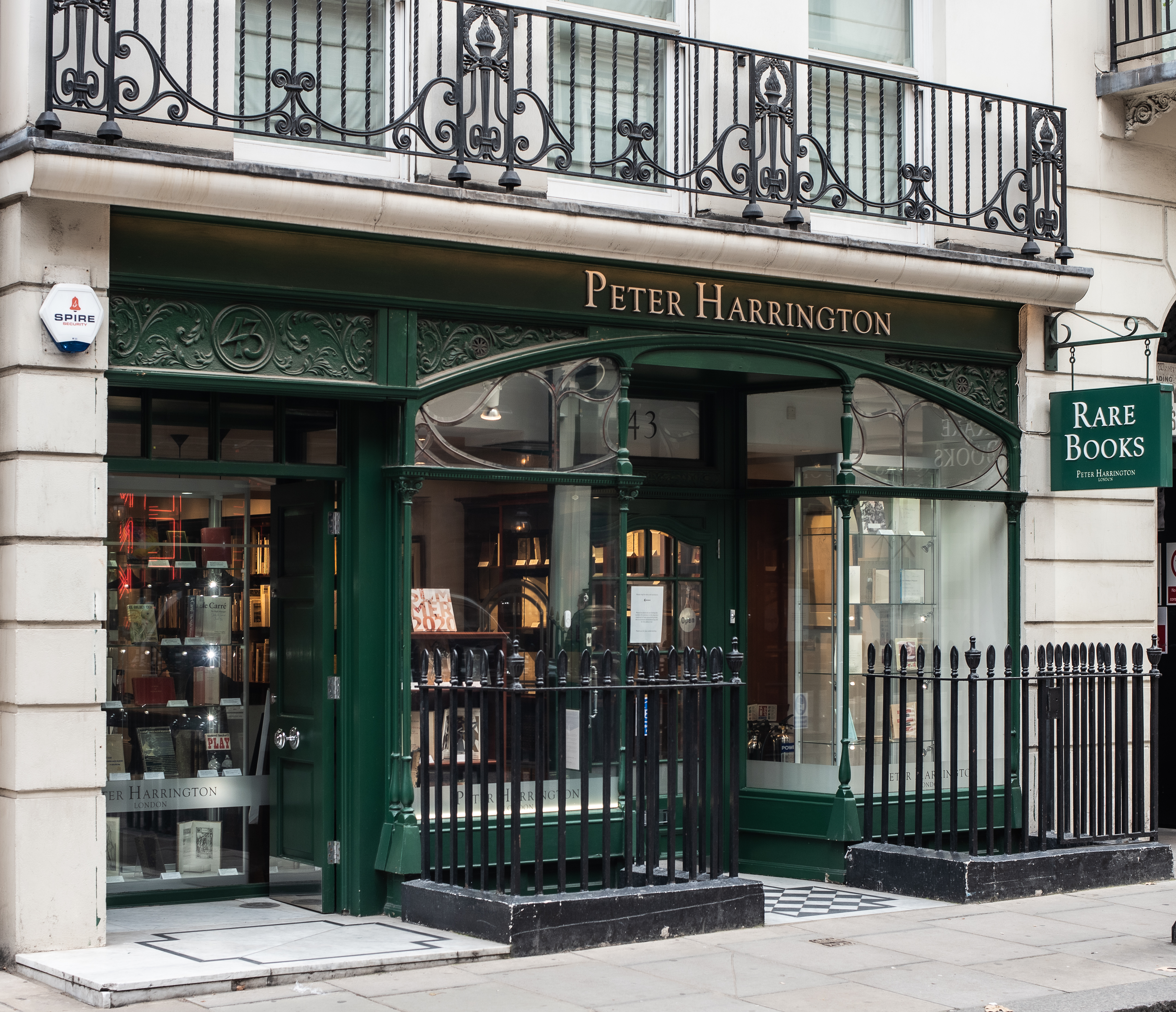Ahmadi: Kuwait Oil Company,, 1961. Eye in the sky over Kuwait Rare map dating to the Kuwait Crisis of 1961 and Operation Vantage, British military intervention in support of the newly independent state of Kuwait against territorial claims by Iraq. This exemplar given added appeal by having been used in the field by a pilot of 13 Squadron RAF on crucial air reconnaissance missions over the disputed border. Kuwait had had a treaty arrangement with Britain since 1899 but by 1961 "it had become clear that the original 1899 Agreement was no longer consistent with Kuwait's international status, and negotiations for its termination began. On 19 June 1961, an Exchange of Notes was signed in which the relationship between Britain and Kuwait was defined. Among other clauses was one under which Britain undertook to go to Kuwait's aid if requested
Revision of Britain's relationship with Kuwait produced an immediate reaction in neighbouring Iraq whose Prime Minister, General Qasim, angrily proclaimed on 25 June, that Kuwait properly belonged to Iraq, being part of Basra under the defunct Ottoman Empire" (Lee, pp. 35-6). In July Qasim moved troops and armour towards the Kuwaiti border. This was a significant threat to British interests, as BP owned 50% of the Kuwait Oil Company, and it retained direct responsibility for Kuwait's defence. Thus, on 30 June the ruler of Kuwait Sheikh Abdulla al Sabah invoked his Agreement with Britain and requested support. Expecting an imminent attack, the British scrambled to have their defences in place by 1 July. "With [British troops] on the ground and with analysis pointing to hours instead of days of advance notice, the JIC [Joint Intelligence Committee] took steps to significantly increase intelligence collection to enhance warning
The decision to intervene remained controversial because the United Kingdom acted even though evidently unable to corroborate human intelligence reports with other intelligence sources. UK photo reconnaissance missions did not locate the armoured regiment [of the Iraqi army] for at least several weeks after Operation Vantage started. By 3 July, six days after the initial human intelligence warnings, RAF Canberra PR9 aircraft were routinely flying photo reconnaissance missions along the Iraq-Kuwait border" (Mobley, p. 23). British intervention made Qasim think twice and no invasion from Iraq transpired, with British forces being replaced by those of the Arab League. The two Canberra PR9s put in the air by the RAF were from 13 Squadron, based in Cyprus, which had been reformed in 1946 as a specialist photo reconnaissance unit. They were then stationed at Bahrain during the crisis. The present map bears the ownership signature of a Flt. Lt. Shepherd, who later co-piloted one of three Canberra PR9s in Operation Hayrack, 13 Squadron's photo reconnaissance survey of North Yemen in 1972 (see Fairbairn). While this is not an aviation map, it would have been a useful way in detailed briefings to RAF personnel on the location of British strategic and economic interests, distinguishing them from those of other foreign and regional powers, most notably the US and Saudi Arabia. Oil is therefore prominent, including fields in Kuwait and Iraq, concessions (Getty and American Independent in the Neutral Zone, Aramco, Basra Petroleum Co), strategic locations (Getty and Aramco Base Camps, Tapline HQ, Aminoil Receiving Base), drilling camps with dates (e.g. Al Jauf-1 Col Arab S.D. Co Drilling Camp - 1943), other KOC installations (pipelines, tanker pump station, floating jetty, etc.); other strategic features include the Bagdad-Basra Railway with stations named, water wells and pipelines, abandoned wells, roads and tracks. The map presents Kuwait with parts of its neighbouring territories, including Iraq north of Basra up to Nahr Umrn (N), Iran beyond Abadan (NE), the Saudi-Kuwait Neutral Zone as far as Ras al Mishab (SE), and Saudi Arabia (W). Kuwait's territory is demarcated one nautical mile off the Gulf Coast and Falaika Island. A printed note states, "This map must NOT be considered an authority on the delimitation of international boundaries". The inset proximity map, approx. 1 inch to 80 miles, includes Bahrain and Qatar, the Saudi-Iraq and Saudi-Kuwait Neutral Zones, and the Trans-Arabian Pipeline (Tapline). An institutional search locates seven or eight other editions only, with varying scales and cartographers named: 1950: 1:250,000 (Penn State); c.1955 (National Library of Scotland); 1956: 1:400,000 (Syracuse); 1958: 1:400,000 (a Durham University copy credited to T. M. Johnstone, and a Library of Congress copy credited to Gomez and G. T. Becker); 1964: by Gomez and L. R. Marshall 1:400,000 (LoC); 1967 by W. C. Savre, 1:200,000 (LoC). Also recorded is a 1:200,000 KOC map from 1968 titled "Concession area and oil field developments: Kuwait" (Oxford). Dyeline printing on cloth, 820 x 620 mm. Scale 1:400,000. With inset "Kuwait Proximity Map". A few tears to folds, slightly rubbed. A very good copy. Tony Fairbairn, "When RAF Canberras Surveyed the Yemen", accessible online; Air Chief Marshal Sir David Lee, The RAF in the Mediterranean and Middle East 1945-71, Part II: The Southern Tier, 1978; Richard A. Mobley, "Gauging the Iraqi Threat to Kuwait in the 1960s", Studies in Intelligence: Journal of the American Intelligence Professional, No. 11, Fall-Winter 2001.

















